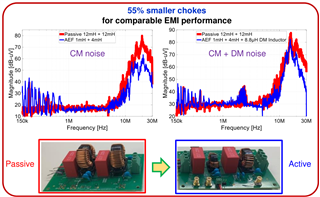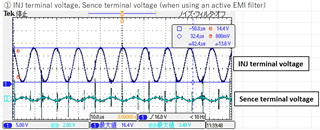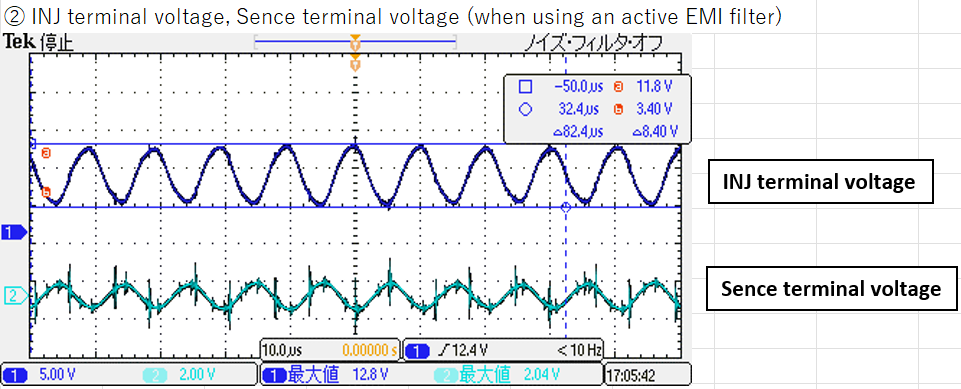Other Parts Discussed in Thread: TIDM-1007
Tool/software:
Hi,
We are currently evaluating your active EMI filter product "TPSF12C1" and would appreciate your input on the following technical questions.
[Question 1]
In the evaluation results of TIDM-1007, the conditions for using an active EMI filter include "8.8uH DM Inductor."
Does this imply that unless differential mode (DM) noise is sufficiently attenuated using a DM choke (e.g., 8.8uH), the overall conducted noise (CM + DM) reduction with the AEF becomes ineffective, even when common-mode (CM) chokes are reduced?
Additionally, would you consider using a DM inductor more effective for DM noise suppression than simply increasing the capacitance of the X capacitors?
[Question 2]
According to the TPSF12C1 datasheet, the linear operating range of the INJ pin is specified as 2.5V to VDD–2V.
Assuming VDD = 12V, if the INJ voltage falls below 2.5V or exceeds 10V, we understand that the internal amplifier may be entering saturation.
Conversely, if the INJ voltage remains within this range, can we assume it is operating linearly and providing valid cancellation output?
Based on this understanding, we consider waveform ① to indicate saturation, while waveform ② appears to be within the linear operating range.

Could you please confirm if our interpretation is correct?
Best regards,
Conor

